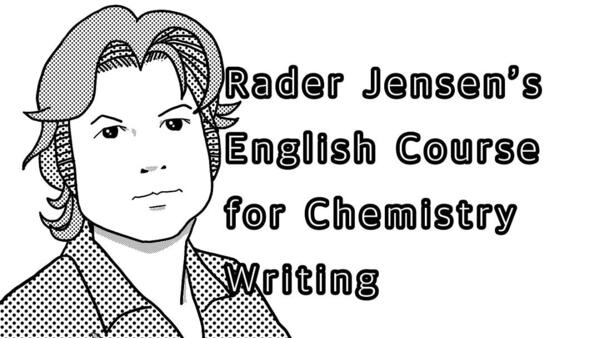CSJ Journals
[化学論文のための英語講座] 第33回:動名詞と不定詞 Part1
(English version is here.)
動名詞と不定詞 Part1 概要
動名詞は動詞の原形に -ing をつけたものです。名詞の性質を持ち、「〜すること」や「まさにその動き」を表します。動名詞は習慣的な行為や一般的にこうだろうと想像される行為に対してよく用いられ、主語や目的語などになります。
一方、不定詞も名詞の性質を持ちますが、動名詞とは感覚が微妙に異なります。動名詞は実際に行われる(行われた)行為など、客観的な感覚を与えますが、不定詞は仮定的な意味合いやアイディア(目的や考えなどを含む)といった主観的な感覚を与えます。両者を交換的に使える場合もありますが、交換すると意味が変わったり、片方しか使わない慣用句があったりする場合もあります。両者は名詞の役割もありますので、文章を組み立てるために動詞を追加する必要があります。例文を見てみましょう。
1a. Reducing the reaction temperature to -78 °C improved enantioselectivity.
訳文:反応温度を-78 °C に下げると、エナンチオ選択性が向上した。
解説:Reducing は動作(行為)を表します。
1b. To reduce the reaction temperature to -78 °C improved enantioselectivity.
訳文:反応温度を-78 °C に下げるために、エナンチオ選択性が向上した。
解説:To reduce the reaction temperatureは目的を示し、improved enantioselectivity は結果として起こる行為ではないのでこれは不完全文で非常に分かり辛いです。このような場合は1aのほうが適切です。
2a. Gas chromatography was used to follow the reaction.
訳文:反応を追跡するためにガスクロマトグラフィーを使用した。
解説:to follow は目的を表します。
2b. Gas chromatography was used following the reaction.
解説:この文は文法的に正しいですが、複数の意味合いを持ち、曖昧な印象を受けます。可能性のある訳を見てみましょう。
訳文1:反応を追跡するためにガスクロマトグラフィーを使用した。
訳文2:反応後ガスクロマトグラフィーを利用した。
そのため 2aのほうがより良いです。
3a. After cooling to 0 °C, stirring was continued for 1 hour.
訳文:0 °C に冷却した後、攪拌を1時間続けた。
解説:cooling, stirring は動作(行為)を表します。
3b. After to cool to 0 °C, to stir was continued for 1 hour.
解説:これは間違いです。Afterの後に不定詞が取れないので文法的に誤りです。to stir は例文1bと同様に目的を示すので適切ではありません。
4a. To prepare the desired model compound, several strategies were explored.
訳文:目的のモデル化合物を調製するために、いくつかの戦略が検討された。
解説:to prepare は目的を表します。
4b. Preparing the desired model compound, several strategies were explored.
解説:これら2つの例文は文法的に正しいですが、ニュアンスが違います。日本語に直すとはっきり分かります。
訳文:目的のモデル化合物を調製しながら、いくつかの戦略が検討された。(「Preparing」の代わりに「In preparing」または「while preparing」も使えます。)
[補足]
以上の例文に現れる動名詞「reducing, cooling, stirring, bleaching」は抽象名詞なので、複数形では使わず冠詞も必要ありません。
次回はミニコーナーです。
Gerunds and Infinitives Part 1 Overview
Gerunds are formed by adding -ing to the base form of a verb. They have properties of nouns and express "to do" or "the action itself". Gerunds are often used to describe habitual actions and actions that are generally imagined, and can be subjects or objects of a sentence.
On the other hand, infinitives also have properties of nouns, however, they have a slightly different feel than gerunds. Gerunds give an objective sense of action that actually occurs or occurred, while infinitives give a subjective sense, such as a hypothetical connotation or idea (including purpose or thought). There are cases where both can be used interchangeably, but there are also cases in which the meaning changes when they are interchanged, or idioms for which only one form is used. Both act as nouns, and thus in order to construct a sentence, a verb must be added. Let us look at some example sentences.
1a. Reducing the reaction temperature to -78 °C improved enantioselectivity.
Explanation: Reducing shows an action.
1b. To reduce the reaction temperature to -78 °C improved enantioselectivity.
Explanation: To reduce the reaction temperature expresses a purpose, however, improved selectivity is not a consequential act and thus, this is a very confusing incomplete sentence.
2a. Gas chromatography was used to follow the reaction.
Explanation: To follow expresses a purpose.
2b. Gas chromatography was used following the reaction.
Explanation: This sentence is grammatically correct, but it has several possible meanings, and gives a vague impression. Let us rephrase the sentence to show other possible meanings.
Possibility 1: Gas chromatography was used for the purpose of following the reaction.
Possibility 2: After the reaction, gas chromatography was used.
Thus, 2a has greater clarity.
3a. After cooling to 0 °C, stirring was continued for 1 hour.
Explanation: Cooling and stirring show actions.
3b. After to cool to 0 °C, to stir was continued for 1 hour.
Explanation: This is mistaken. After should not be followed by an infinitive and thus, this is grammatically incorrect. As in example 1b, to stir shows a purpose and thus is not appropriate.
4a. To prepare the desired model compound, several strategies were explored.
Explanation: To prepare shows purpose.
4b. Preparing the desired model compound, several strategies were explored.
Explanation: Both 4a and 4b are grammatically correct, but with a different nuance. In 4b, preparing can be replaced with expressions like during the preparation of, in preparing, or while preparing and retain the same meaning.
Supplement:
In the above examples, reducing, cooling, stirring, and bleaching are abstract nouns and thus they are not used in the plural form and do not require articles.
We will post mini corner at next time.
